Kraków 2021-10-08
Diesel Multiple Unit SA133 Pesa 218M.
Pesa 218M is a two-car standard-gauge PCS (Diesel Multiple Unit). These trains were produced in the period 2005-2015 by Zakłady Pesa in Bydgoszcz. The Pesa 218M train includes a family that received the type designations SA131, SA132, SA133 and SA134.
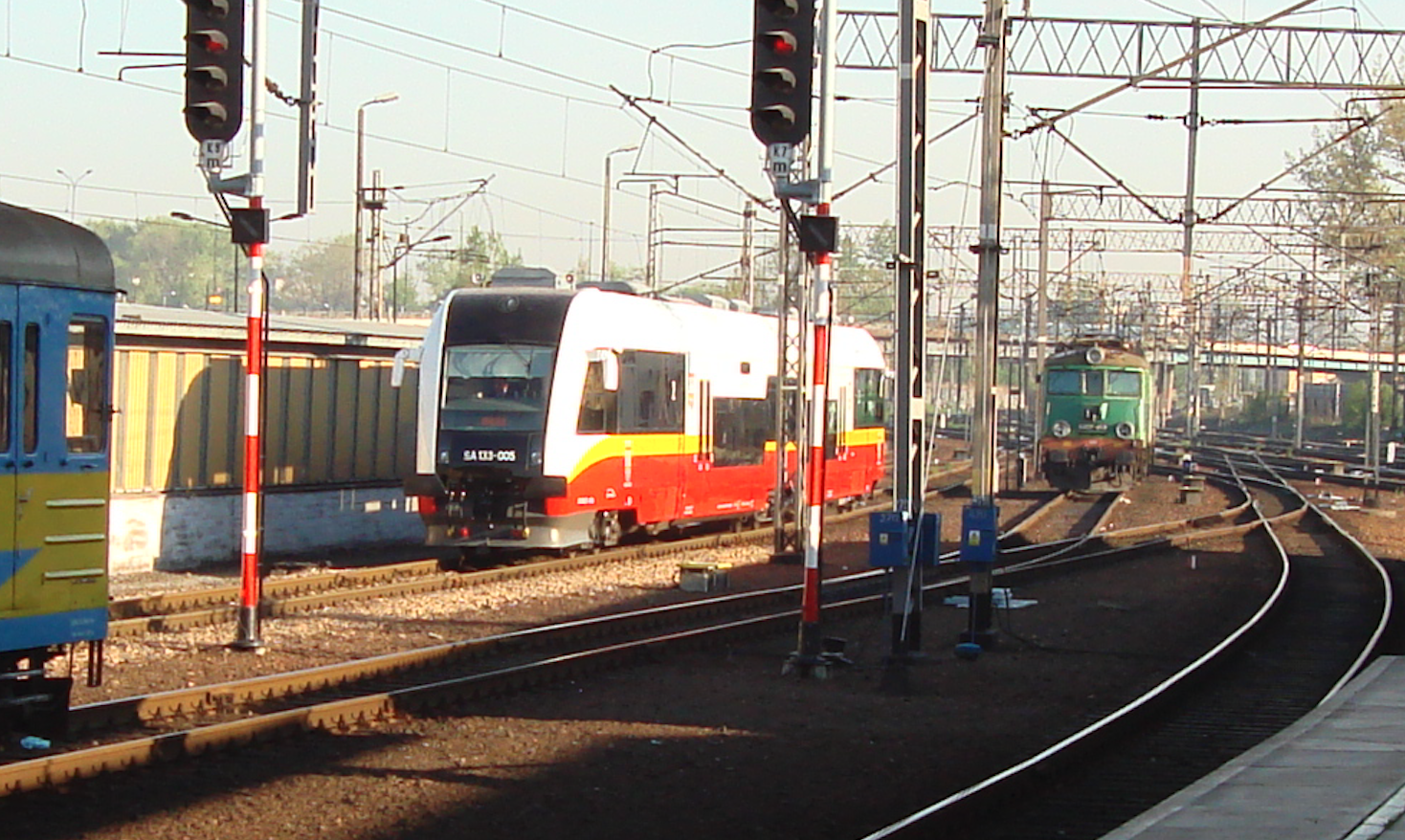
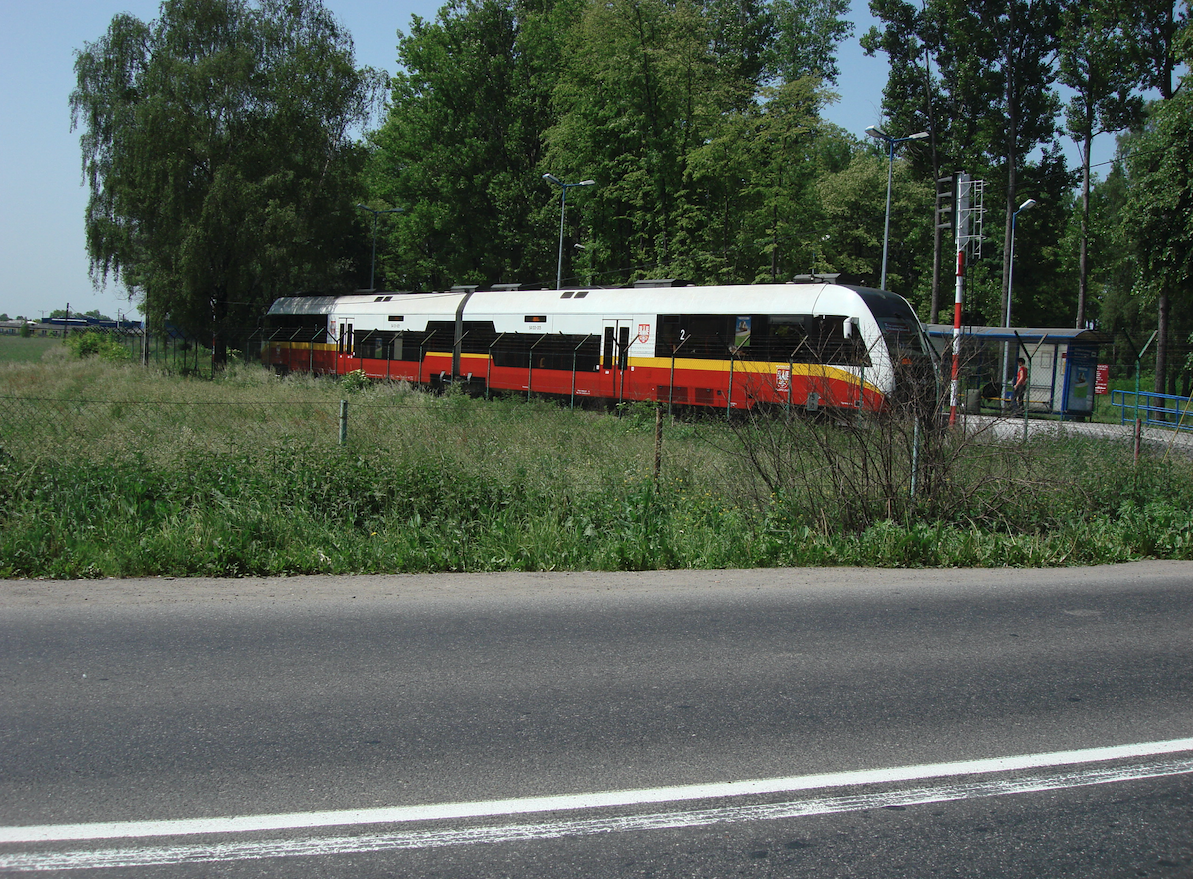
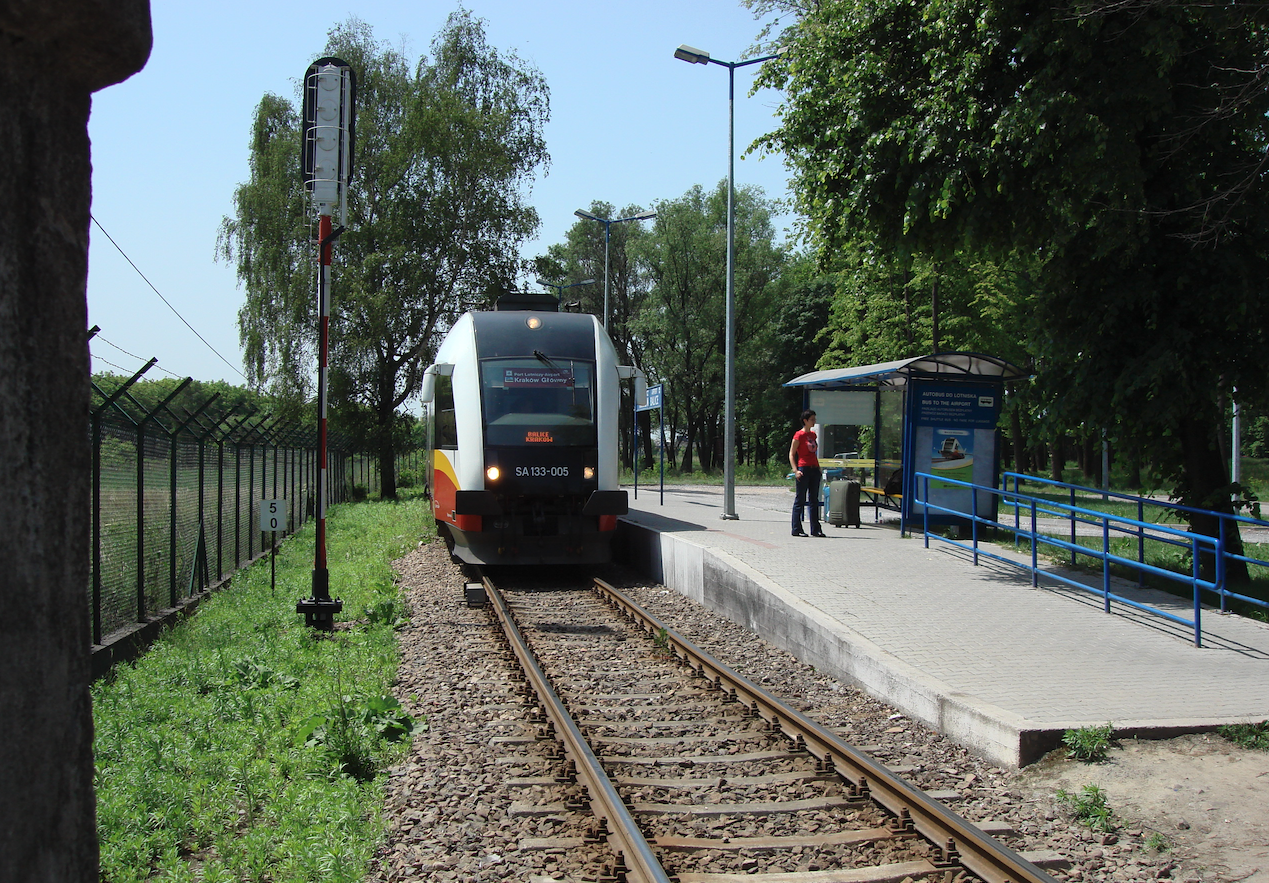
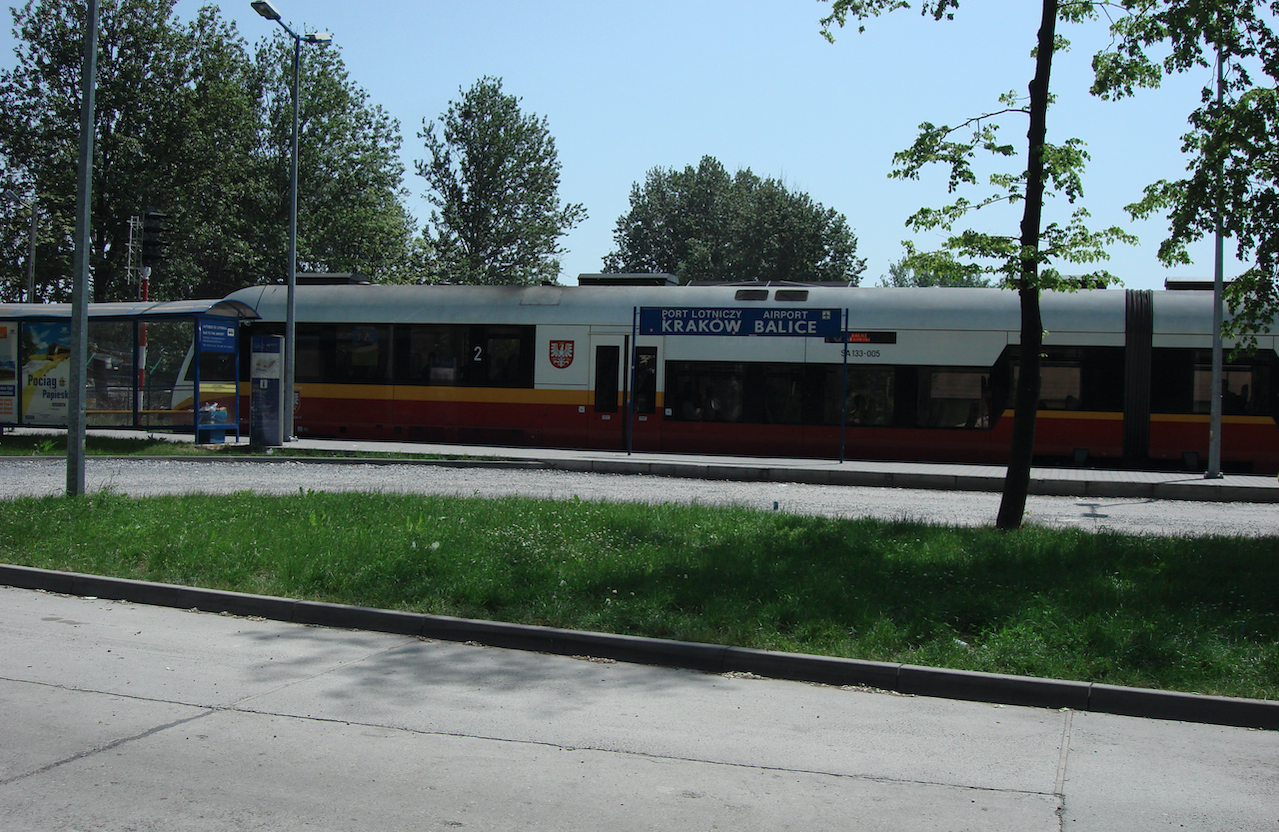
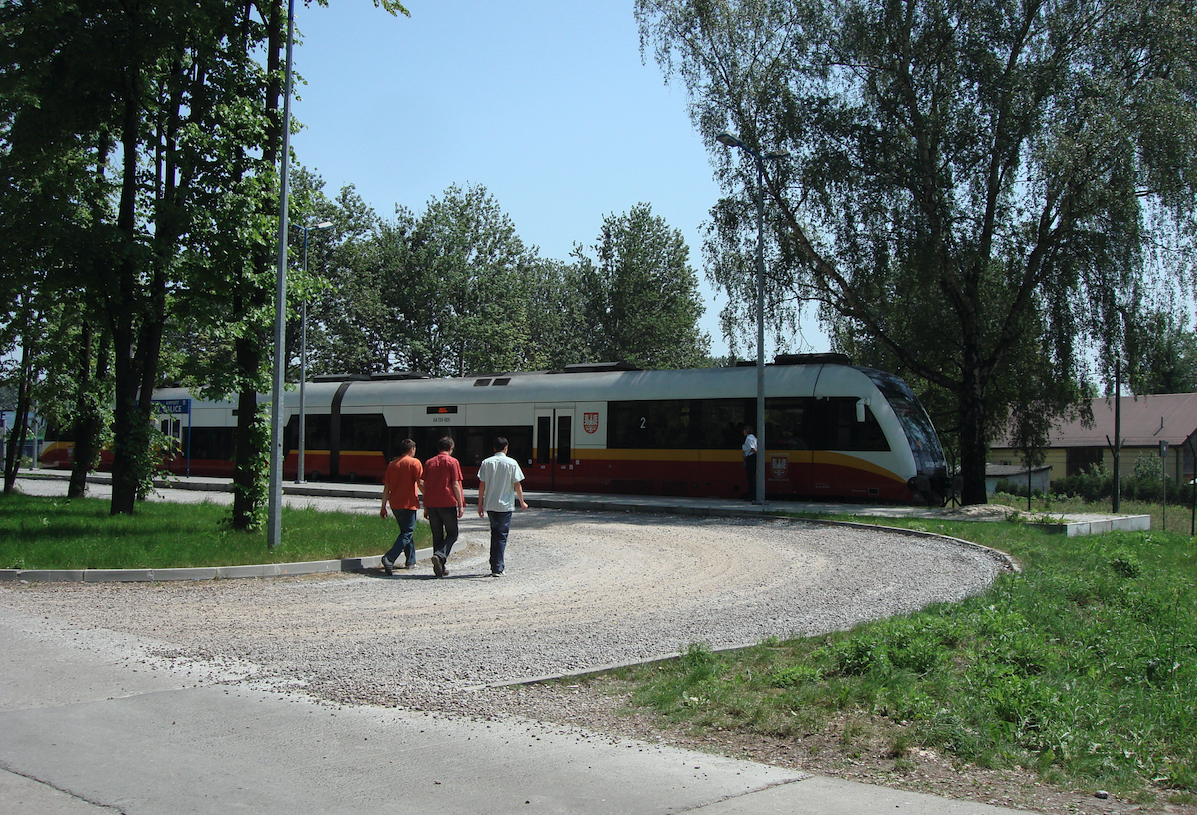
The genesis of the Pesa 218M train.
In 2000, there was another drastic liquidation of passenger railway connections in Poland. The decommissioning mainly affected local connections on non-electrified lines. It is true that these connections were operated by large diesel locomotives and carried a small number of passengers. As early as 2001, the Pesa plant started to develop smaller passenger railcars. The first was the Pesa 214M railcar.
The construction of a two-car set was quickly started. The second car was to be trailer without or with an engine. Originally, it was planned to connect two Pesa 214M railcars. The project proposed to eliminate one of the driver's cabins and to install a gangway for passengers and staff in this place. Such a train was to be 49 m long. Each car was to have two bogies; one driving and one rolling. This new two-car train was to be designated Pesa 217M.
But finally in 2005, Pesa opted for a slightly different construction. The wagons were connected by one Jacobs-type bogie. The first Pesa 218Mx SA131-001 train was built, which was ordered by the authorities of the Pomeranian Voivodeship.
The Pesa 218Mx train was developed into the Pesa 219M Atribo, a 3-car train. This version of the train was produced from 2007.
In the following years, the plant in Bydgoszcz developed the next generation of 2-car PCS, designated 223M Link, with the front end characteristic for new locomotives and EMUs from Bydgoszcz.
SA131 - SA134 series.
When the new trains were to be given a type series designation, a minor problem arose. The train is classified as a "rail bus", so it belongs to the term SA. But the diesel wagon designation system (SA101 - SA110), which has been in force since 1970, is no longer available. It was decided to add more markings from SA131 upwards. Only one Pesa 218M SA131 train was built. The Pesa 218Ma and 218Mb trains were designated SA132. The subsequent modernized trains were designated SA133 and SA134.
The first trains were ordered by operators in December 2004. One train was ordered by the Municipal Office of the Pomeranian Voivodeship, the Greater Poland Voivodeship and the Lower Silesian Voivodeship. Since 2006, successive voivodships have ordered 2-3 trains each.
On July 6, 2006, an agreement was signed for the delivery of 2 Pesa 218Mc trains for the Marshal's Office of the Małopolskie Voivodeship for servicing Kraków Główny - Balice Airport connections. In 2007, two AS133-004 and AS133-005 trains were delivered. Under this contract, four additional trains of the EN81 series type 308B (1-car) were ordered. The first Pesa 218Mc series SA133-004 train started to run on March 2, 2007. In 2014, due to the modernization and electrification of the line to the airport, all the Małopolska SA133 and Kolzam SA109 trains were transferred to the Pomeranian Voivodeship, the PolRegio branch.
The SA133 trains were doing well. However, in 2015, during inspections, it turned out that the Jacobs 37AN type bogie suffered damage in the form of a fracture in the bogie frame. The trolleys were commissioned every two weeks. When cracks were found, the bogies were replaced with new ones.
During the renovation of the P4 level, the trains are painted inside and out. Seats are replaced. Trains are often retrofitted with 230 V sockets for passengers and Wi-Fi internet. New ticket machines are being installed. A passenger counting system is installed, which continuously transmits this information to the mechanic and to the operator's center. Sometimes the rainwater drainage system (gutters and drains) is modernized.
Construction of the Pesa 218M train.
SZT Pesa 218M is a 2-car train. The train inside is single-space. There is no inter-car door. The train weighs 76,000 kg - 82,000 kg.
The train has three carriages. The end carriages are two-axle driven by a diesel combustion engine. The drive uses a PowerPack motor with a hydraulic transmission. The following engines were used: MAN D2876LUE623, 382 kW, Voith R2876T3-390, 390 kW, MTU 6H1800R81, 350 - 360 kW. A drive shaft emerges from the engine and runs to the first axle gearbox. From this gearbox comes another shaft which connects to the gearbox of the second drive axle. This type of drive can be used for 3-car units. The train has two diesel tanks with a capacity of 580 liters each, or 650 or 750 liters.
The train suspension has two spring rates. The first are metal-rubber elements, and the second are air springs, by means of which the box is attached to the trolleys. Most of the train equipment and fittings were placed under the car bodies: batteries, fuel (diesel) tanks, air tanks, compressors, „PowerPack".
Wagon boxes of individual types differ in details. The boxes are made of a spatial steel truss made of closed profiles. The sheathing was made of sheets of aluminum alloys, which were assembled by gluing. The front walls are made of plastic. Windows are pasted. Automatic bounce-sliding doors were used. The number of doors depended on the ordering party. Usually each car has one pair of doors on each side. The width of the entrance to the wagon is 1.30 m. The height of the entrance is 0.60 m from the rail head. The doors can be opened at the push of a button by passengers or by the driver. The driver is responsible for closing the door.
There are small screens by the door, about 0.50 - 0.60 m wide. The train usually has one closed toilet, adapted to the needs of disabled people. Passengers have passenger information displayed on LCD monitors. There is monitoring on the train.
The heat from the diesel engine cooling system in the form of a Webasto Thermo 350 heating unit is used to heat the trains. Electric air vents are additionally installed at the entrance door. Air conditioning is used to cool and ventilate the train. The air-conditioning parameters depended on the ordering party. Air conditioners are mounted on the roof of the wagon body.
The floor in the train is about 50% low (0.60 m from the rail head) and about 50% of the high floor and stairs (bogie area). Type of passenger seats, their arrangement, color of upholstery; depended on the ordering party. The train has a maximum of 175 seats. Usually there are 134-146 seats in the train.
T-T SA133 details:
Axle arrangement: B'2'B '. Length 41.70 m. Width 2.89 m. Height 4.13 m. The train weighs 82,000 kg. Design speed 120 km / h. Wheel diameter 0.84 m. Internal combustion engine Voith R2876T3-390, power 2 x 390 kW. Voith T211re hydraulic gearbox. 4.
Written by Karol Placha Hetman
